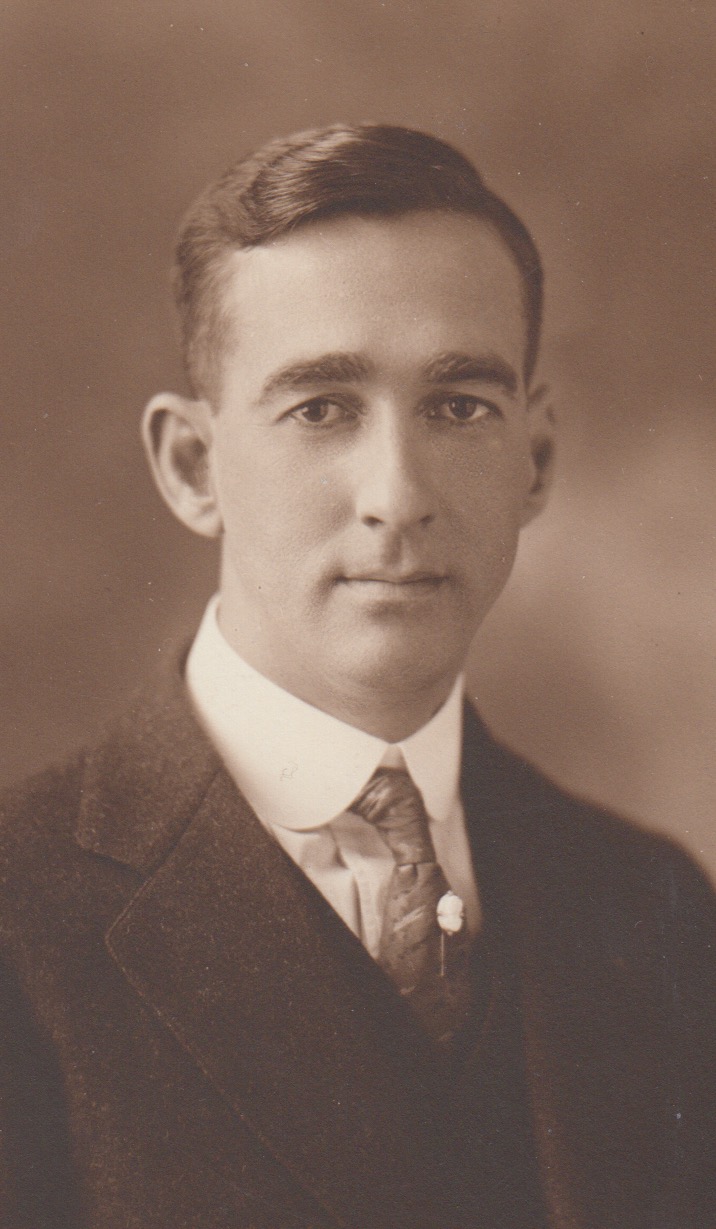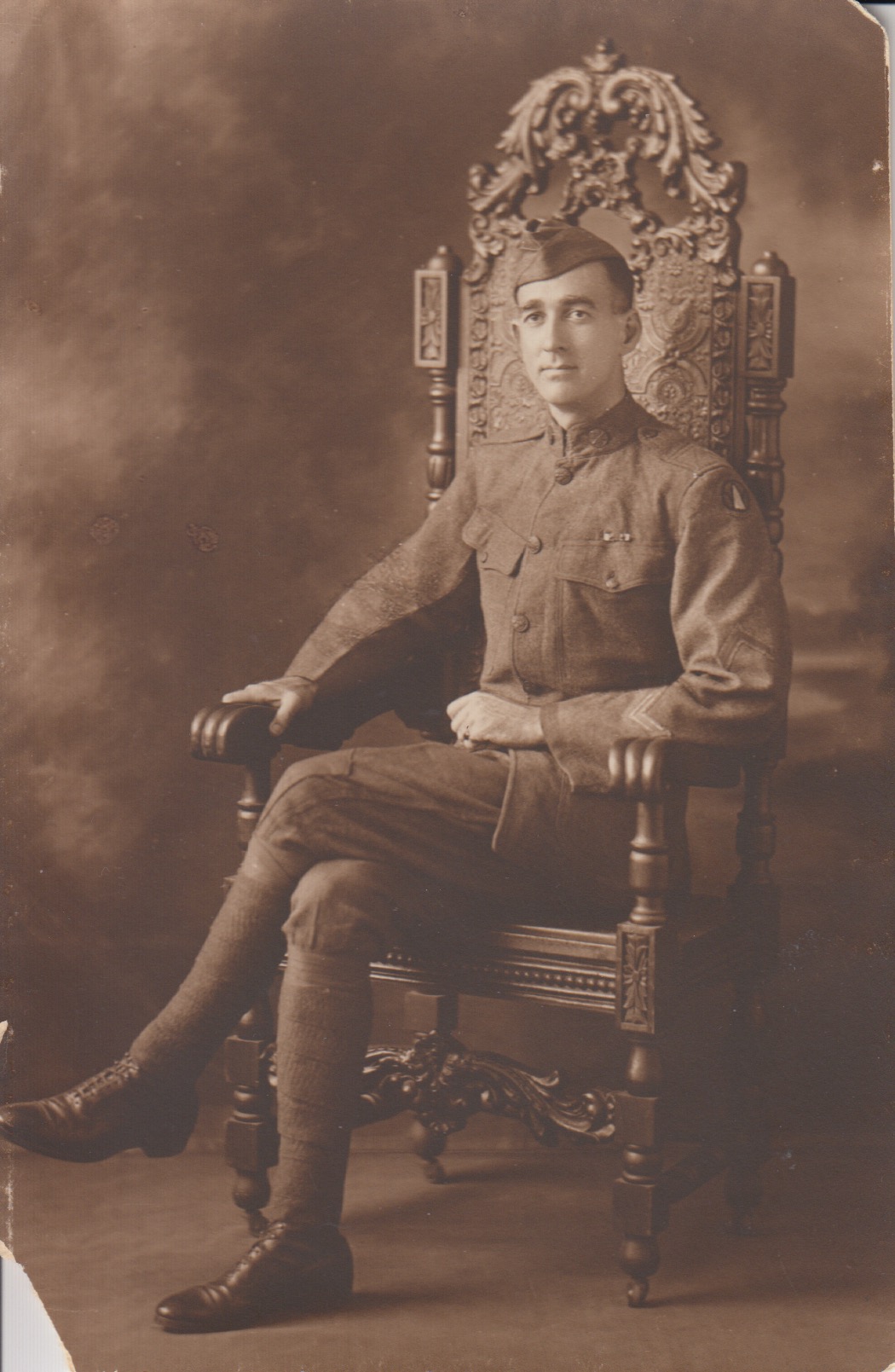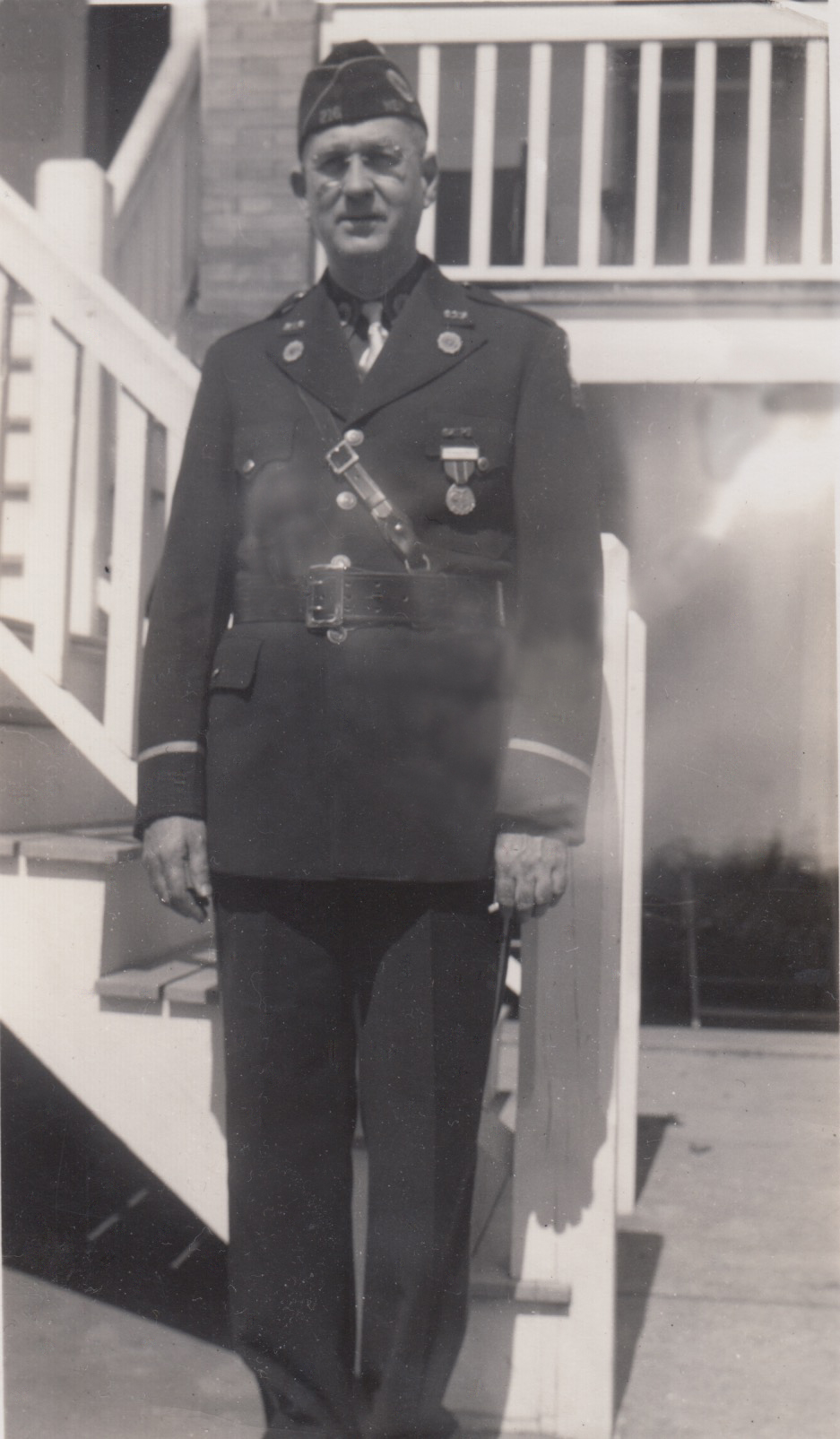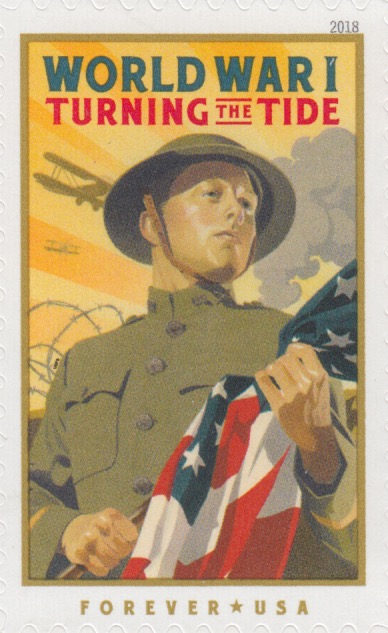World War I – Turning the Tide. A Moving Offensive of Americans Across the Countryside
Cpl. Francis Horace Salmon took part in this Company D First Offensiveon September 10th, 1918.

Gen. John J. Pershing was determined to change from the Allie’s (Britain-Belgium-France) stationery trench warfare to a moving offensive across the countryside. His new recruits from America needed specialized training before facing the seasoned German infantry. During June and July the 89th Division trained near Reynel, France, then gradually were given assignments as backup for French and Belgian troops. In early August, Pershing began sending into action the American divisions entirely under his own A.E.F. command (American Expeditionary Forces). Here is an account of Horace Salmon’s Company D, as documented in The History of Company D, 356thInfantry, 89thDivision, pp. 5-6.
“On September 10th“D” company was fitted out with “Over the Top” equipment. This consisted of Bengal flares, armor panels, Very signal-pistols, extra grenades, sand bags, and extra ammunition. The same evening the company moved forward to Hazel Wood where it remained until September 11th. At 11:00 P.M. the company started forward to a place from which it would be ready to take up its attack formation the next morning. The artillery barrage started at 1 A.M. and continued throughout the night. It rained continually. The men were located in a communication-trench in which the mud was knee deep. It was impossible to obtain rest. There was no place to sit down, consequently it was necessary to stand all night. The zero hour was 5:00 A.M. and everybody was glad when it came. It would now be possible to shake the mud, to move about, and incidentally, to “get a crack at Fritz.”
“At 5:00 A.M. September 12, the advance started. Company “D” [which included Cpl. Salmon’s unit] was detailed as “mopper-up” for the 3rd Battalion which was the assault battalion. [German] trenches, dugouts, and other forms of shelter were explored. The exploration was not in vain for the company managed to capture over 200 prisoners. Pvt. Kibbie Wilcut was the first man in the company to be killed. He was struck by a High Explosive shell, one-half kilometer east of Essey. The company continued the advance throughout the day. At 6 P.M. a halt was declared and the company dug itself in on the reverse slope of a hill 2.5 kilos southeast of Pannes. The men had just fallen asleep when an order came to advance and this was done until 5:30 A.M.” It seems amazing that these Americans had the strength and discipline to make their movements mostly at night.
Pershing’s approach was paying off. The use of fresh American troops as a moving offensive across the countryside began to TURN THE TIDE and the Germans began a desperate retreat from France that ended on November 11thwith the Armistice. To this day, that Armistice is celebrated in the United States as well as Britain, Belgium and France. This new U.S. stamp says it well. Corporal Francis Horace Salmon is shown below
Click here to download the PDF version.

1917 (age29) 
1918 (age 30) 
1949 (age 61)

The story continues in the next chapter.
